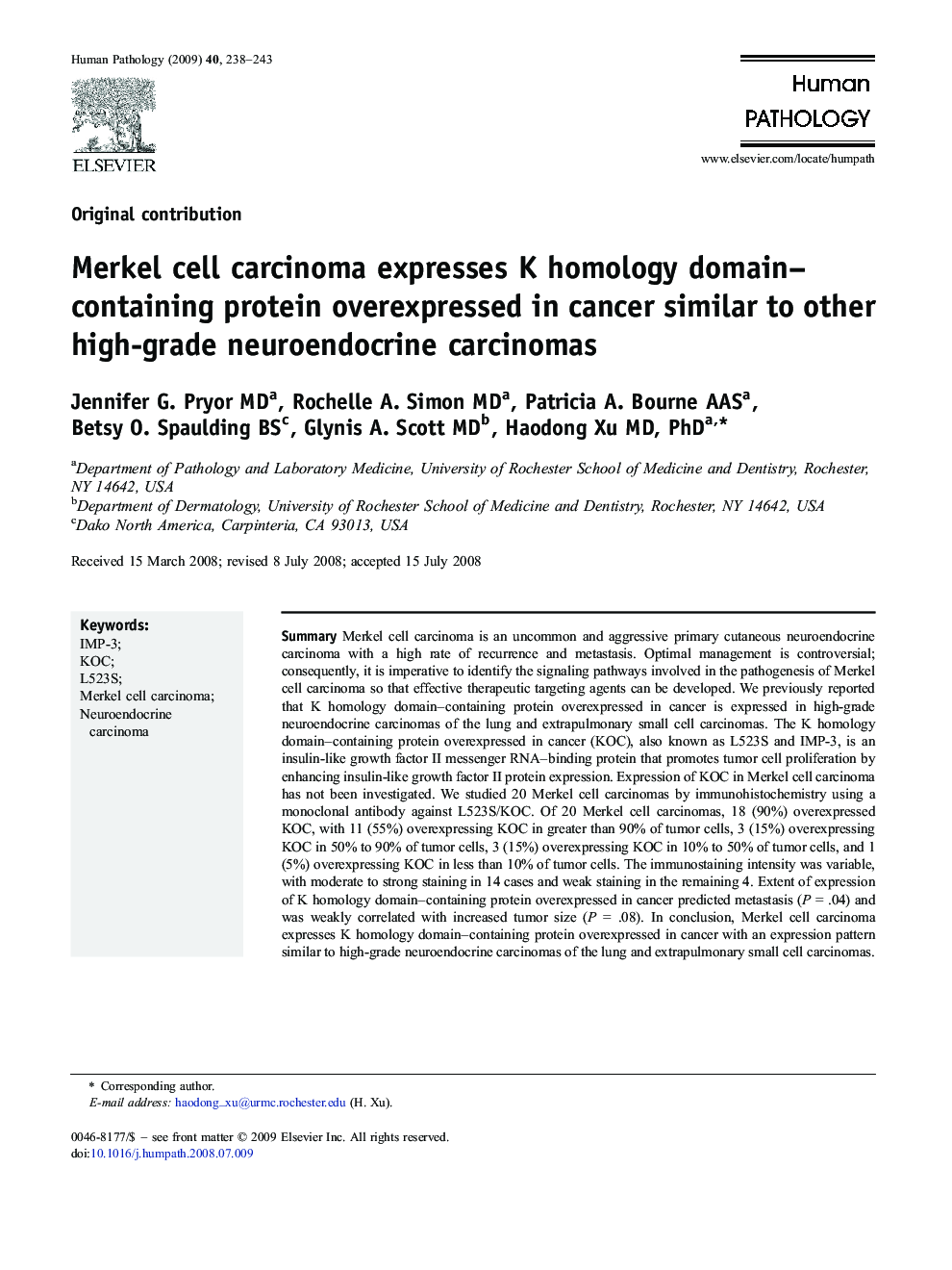| Article ID | Journal | Published Year | Pages | File Type |
|---|---|---|---|---|
| 4134886 | Human Pathology | 2009 | 6 Pages |
SummaryMerkel cell carcinoma is an uncommon and aggressive primary cutaneous neuroendocrine carcinoma with a high rate of recurrence and metastasis. Optimal management is controversial; consequently, it is imperative to identify the signaling pathways involved in the pathogenesis of Merkel cell carcinoma so that effective therapeutic targeting agents can be developed. We previously reported that K homology domain–containing protein overexpressed in cancer is expressed in high-grade neuroendocrine carcinomas of the lung and extrapulmonary small cell carcinomas. The K homology domain–containing protein overexpressed in cancer (KOC), also known as L523S and IMP-3, is an insulin-like growth factor II messenger RNA–binding protein that promotes tumor cell proliferation by enhancing insulin-like growth factor II protein expression. Expression of KOC in Merkel cell carcinoma has not been investigated. We studied 20 Merkel cell carcinomas by immunohistochemistry using a monoclonal antibody against L523S/KOC. Of 20 Merkel cell carcinomas, 18 (90%) overexpressed KOC, with 11 (55%) overexpressing KOC in greater than 90% of tumor cells, 3 (15%) overexpressing KOC in 50% to 90% of tumor cells, 3 (15%) overexpressing KOC in 10% to 50% of tumor cells, and 1 (5%) overexpressing KOC in less than 10% of tumor cells. The immunostaining intensity was variable, with moderate to strong staining in 14 cases and weak staining in the remaining 4. Extent of expression of K homology domain–containing protein overexpressed in cancer predicted metastasis (P = .04) and was weakly correlated with increased tumor size (P = .08). In conclusion, Merkel cell carcinoma expresses K homology domain–containing protein overexpressed in cancer with an expression pattern similar to high-grade neuroendocrine carcinomas of the lung and extrapulmonary small cell carcinomas. We propose K homology domain–containing protein overexpressed in cancer as a potential target molecule for the treatment of high-grade neuroendocrine carcinomas, irrespective of anatomical location, and a potential marker to predict metastatic disease.
